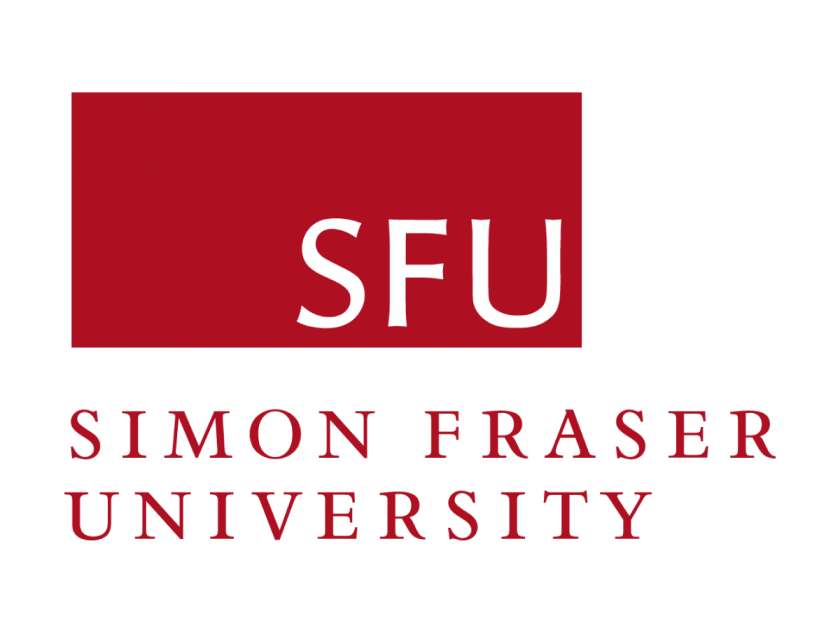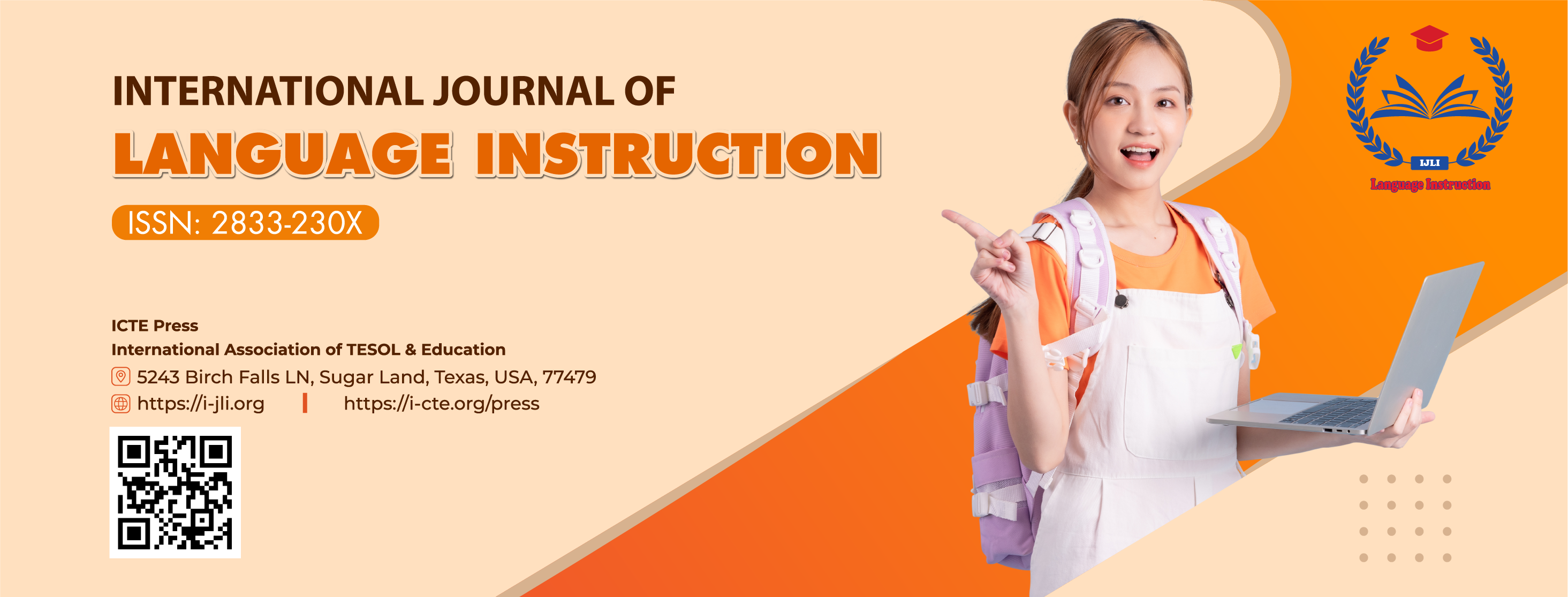Employing CLT Approach to Improve English Speaking Skill for Hau Giang Community College Students
DOI:
https://doi.org/10.54855/ijli.22114Keywords:
CLT approach, English speaking skills, classroom activities, interactionAbstract
Teaching the English language to non-native students at Hau Giang community college is a concern for instructors. This research was conducted to examine whether the CLT approach is the effective teaching method that students expect. The research used survey questionnaires for teachers and students. The participants consisted of 16 teachers of English and 23 EFL students at Hau Giang community college. The quantitative data was collected through the Google form application. The finding indicates that necessary factors such as classroom activities, appropriate teaching materials, and media aim to create a communication environment that gives learners some chances to interact with each other. The study results confirmed that CLT is an appropriate and effective teaching method for students here until now.
References
Akhter, S., & Ashiquzzaman, M. (2019). Teaching Speaking Using Post-Method Framework: A Possible Complement to CLT in Bangladesh. BELTA Journal, 3(1), 65-71. doi: https://doi.org/10.36832/beltaj.2019.0301.05
Al-Garni, S. A., & Almuhammadi, A. H. (2019). The Effect of Using Communicative Language Teaching Activities on EFL Students' Speaking Skills at the University of Jeddah. English Language Teaching, 12(6), 72-86. doi: https://doi.org/10.5539/elt.v12n6p72
Cai, W. (2009). Using communicative language teaching (CLT) to improve speaking ability of Chinese non-English major students. Retrieved from https://minds.wisconsin.edu/bitstream/handle/1793/34646/CaiWenjie.pdf?sequence=5
Chang, M., & Goswami, J. S. (2011). Factors Affecting the Implementation of Communicative Language Teaching in Taiwanese College English Classes. English Language Teaching, 4(2), 3-12. doi: 10.5539/elt.v4n2p3.
Dabiri, D., & Pourhosein Gilakjani, A. (2019). The impact of pre-speaking activities on Iranian intermediate EFL learners’ oral performance. International Journal of Research in English Education, 4(2), 89-104. doi: 10.29252/ijree.4.2.89.
Farooq, M. U. (2015). Creating a Communicative Language Teaching Environment for Improving Students' Communicative Competence at EFL/EAP University Level. International Education Studies, 8(4), 179-191. doi: 10.5539/ies.v8n4p179.
Gudu, B. O. (2015). Teaching Speaking Skills in English Language Using Classroom Activities in Secondary School Level in Eldoret Municipality, Kenya. Journal of Education and Practice, 6(35), 55-63.
Indriyani, N. I. (2020). Students’ difficulties in English speaking class. The Ellite 0f Unira, 3(1), 21-29.
Islam, W., Ahmad, S., & Islam, M. D. (2022). Investigating the Problems Faced by the University EFL Learners in Speaking English Language. International Journal of TESOL & Education, 2(2), 47–65. https://doi.org/10.54855/ijte.22223
Lom, B. (2012). Classroom activities: simple strategies to incorporate student-centered activities within undergraduate science lectures. Journal of Undergraduate Neuroscience Education, 11(1), A64.
Ngan, C. T. (2013). The application of communicative activities in English speaking classes of grade 11th students at Cao Lanh city high school. Unpublished doctoral dissertation). Dong Thap University. Retrieved April, 5, 2016.
Nishino, T. (2008). Japanese secondary school teachers' beliefs and practices regarding communicative language teaching: An exploratory survey. Jalt Journal, 30(1), 27.
Putri, N. W., Sukirlan, M., & Sudirman, S. (2014). The effect of using CLT to improve speaking. U-JET, 3(4), 1-11.
Qasemi, A. S. (2020). Factors affecting students’ speaking performance in English department of Jawzjan University. International Journal of Innovative Research and Scientific Studies, 3(4), 129-134. doi: https://doi.org/10.53894/ijirss.v3i4.46.
Salman, A. (2010). ICT, the new media (Internet) and development: Malaysian experience. The Innovation Journal: The Public Sector Innovation Journal, 15(1), 5.
Saputra, J. B. (2015). Communicative Language Teaching: Changing Students’ Speaking Skill. Premise: Journal of English Education and Applied Linguistics, 4(1), 1-14. doi: https://doi.org/10.24127/PJ.v4i1.277.
Sari, A. S. P., & Sembiring, R. K. B. (2019). Improving Students’ English Speaking Skill Through the Implementation of Talking Stick Method to the Fifth Grade Students of State Primary School 028226 Binjai. Budapest International Research and Critics in Linguistics and Education (BirLE) Journal, 2(4), 507-513. doi: 10.33258/birle.v2i4.552.
Thamarana, S. (2015). A critical overview of communicative language teaching. International Journal of English Language, Literature and Humanities, 3(5), 90-100.
Teh, W. (2021). Communicative Language Teaching (CLT) in The Context of Online Learning: A Literature Review. International Journal of TESOL & Education, 1(2), 65–71. Retrieved from https://i-jte.org/index.php/journal/article/view/23
Toro, V., Camacho-Minuche, G., Pinza-Tapia, E., & Paredes, F. (2019). The Use of the Communicative Language Teaching Approach to Improve Students' Oral Skills. English Language Teaching, 12(1), 110-118. doi: 10.5539/elt.v12n1p110.
Wael, A., Saputra, D., & Setyawati, E. (2019). Enhancing Students’ Oral Communication By Using Communicative Language Teaching (CLT). Qalam: Jurnal Ilmu Kependidikan, 8(1), 38-49. doi: 10.33506/jq.v8i1.469.
Wahyuni, K., Octavianita, A., Nur, S. A., Handayani, T., & Ihsan, M. T. (2021). The implementation clt approach to improve students speaking skills. Jurnal Riset Dan Inovasi Pembelajaran, 1(2), 144-152. doi: 10.51574/jrip.v1i2.42
Yanli, W. (2019. Innovative Research on the Teaching Methods of English Listening and Speaking Courses under the New Media Platform. International Conference on Education, Management, Social Science and Humanities Research (EMSSHR 2019). Published by CSP, 75-79
Downloads
Published
Issue
Section
License
Copyright (c) 2022 Tran Thi Huyen Trang

This work is licensed under a Creative Commons Attribution-NonCommercial 4.0 International License.
The copyright of all articles published in the International Journal of Language Instruction (ijli) remains with the Authors, i.e. Authors retain full ownership of their article. Permitted third-party reuse of the open access articles is defined by the applicable Creative Commons (CC) end-user license which is accepted by the Authors upon submission of their paper. All articles in the ijli are published under the CC BY-NC 4.0 license, meaning that end users can freely share an article (i.e. copy and redistribute the material in any medium or format) and adapt it (i.e. remix, transform and build upon the material) on the condition that proper attribution is given (i.e. appropriate credit, a link to the applicable license and an indication if any changes were made; all in such a way that does not suggest that the licensor endorses the user or the use) and the material is only used for non-commercial purposes.
Authors are able to enter into separate, additional contractual arrangements for the non-exclusive distribution of the journal's published version of the work (e.g., post it to an institutional repository, in a journal or publish it in a book), with an acknowledgment of its initial publication in this journal.











